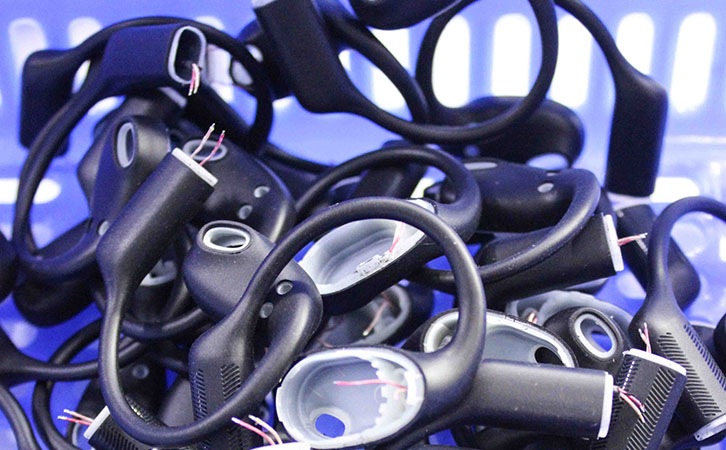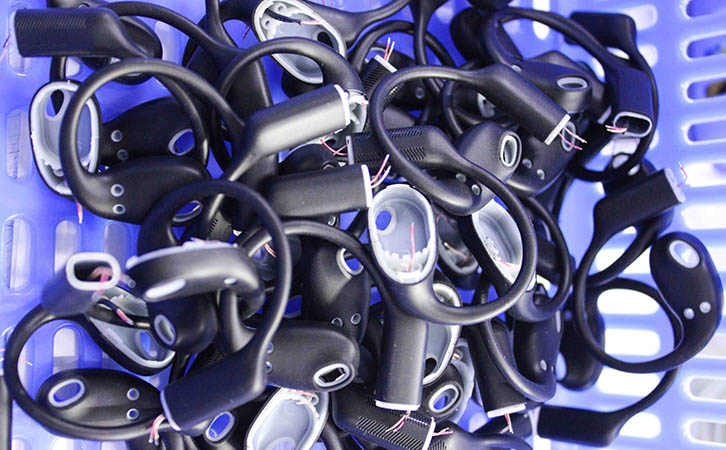The production process of hanging ear headphones with memory wire wrapped in liquid silicone
Step 1: Secure the memory wire (insert placement)
The robotic arm (or manual) accurately places the pre bent shape memory wire into the specific slot of the mold. Ensure that its position is precise and not displaced by the pressure of subsequent molding vulcanization.
Step 2: Mold closing and vulcanization molding
The mold closes at high speed, forming a closed cavity.
The A and B components of liquid silicone are accurately measured, mixed, and injected into the mold through a screw at low temperature.
The injection process requires precise control of pressure, speed, and temperature to ensure that the silicone can flow evenly throughout the entire mold cavity, completely enveloping the memory wire, while not producing bubbles or missing materials.
Step 3: Heat curing
The mold is heated to a higher temperature (usually above 180 ° C-200 ° C).
At high temperatures, liquid silicone undergoes cross-linking reaction (vulcanization), rapidly solidifying from liquid to elastic solid. This process is very fast, usually only taking a few tens of seconds.

Step 4: Mold opening and component retrieval
The mold is opened, and the robotic arm is inserted to remove the already formed silicone ear hook (wrapped with memory wire inside).
Due to the non stickiness of silicone, the finished product will not stick to the mold, making it easier to remove.
Step 5: Post treatment (secondary vulcanization)
The just removed component may still have some slight odor or small molecules that have not fully reacted.
They will be put into the oven for secondary vulcanization, which is a baking process that can further enhance the mechanical properties, stability, and biocompatibility of silicone, and remove odors.
Post assembly and testing
Trim nozzle: Trim off excess material heads (nozzles) generated during the injection molding process.
Quality Control (QC): Check the product for defects such as missing materials, bubbles, impurities, exposed wire, etc.
Assembly with other components: If the earphone body is separate, it is now necessary to tightly assemble the formed ear hook with the body part through adhesive, snap fasteners, or other methods.
Functional testing: Conduct audio, battery, Bluetooth connection, waterproof, and other tests on the complete headphones.
Packaging and storage: After passing all tests, proceed to final packaging.


